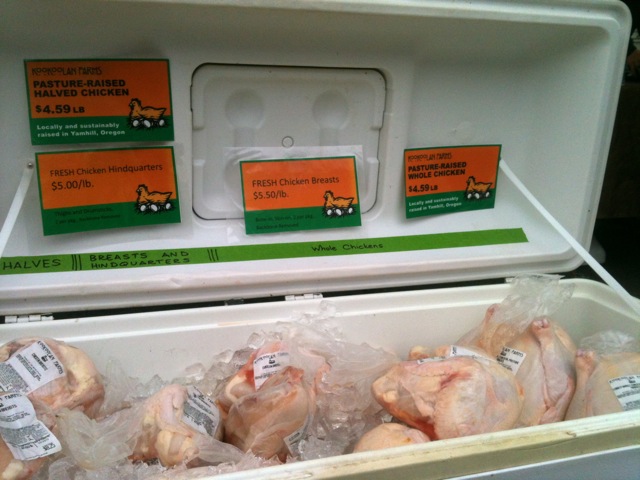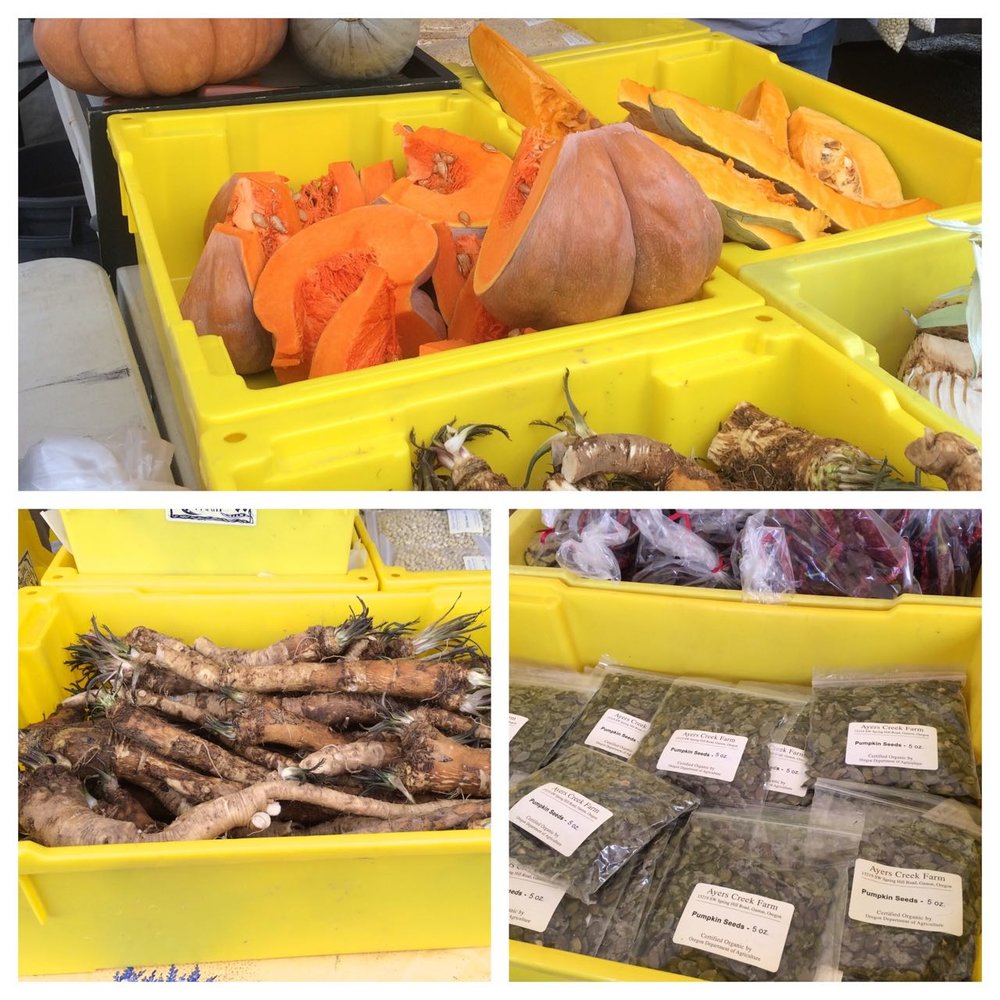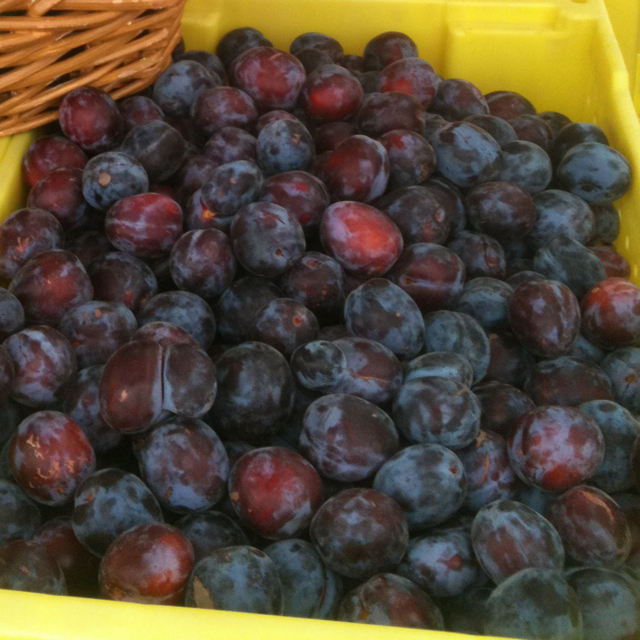Vendor Profile: Olympia Provisions
Guest User
By Sarah West
Olympia Provisions (formerly, Olympic Provisions) needs no introduction. Their cured salamis rose to national acclaim—by the likes of Saveur, Bon Appetit, Food & Wine, and Oprah magazines—just a few brisk years after chef Elias Cairo began producing them in November of 2009. Opening a restaurant of the same name in southeast Portland with a team of chef-restaurateur partners, Elias was not alone in creating Olympia Provisions’ success, but he was the man behind the plan for the restaurant’s ambitious meat-curing facility, the first of its kind in Oregon to be USDA-certified.
Influenced by a five-year chef apprenticeship in Switzerland, Cairo experienced firsthand the meticulous process behind some of Europe’s famous cured meats. Raised by a first-generation Greek father who butchered his own animals and brought salami along on every family outing, Cairo was predisposed to appreciate good cured meat. And when the opportunity to partner on a new restaurant project came his way, he was game for trying to recreate some of the nuanced flavors he experienced abroad.
From the beginning, Cairo has insisted that virtuous salami can only be made by hands, not machines, and must be cold-fermented under a bloom of white mold that not only preserves the meat, but lends it an inimitable umami-tang. When he and his restaurant partners designed the original curing facility, they could not have foreseen the two major expansions that would follow in the next four years, scaling up their meat processing facility from 800 square feet to 40,000. While these expansions forced Olympia Provisions to move away from the small-batch artisanal production (done exclusively by Cairo himself) they had originally envisioned, they have maintained a strong focus on hand-production.
Machines now mix the 4,500 pounds of pork they process each day in 150-pound “small” batches which are blended with spices and hand-peeled garlic to order then stuffed into a natural hog casing and tied by a team of four dexterous salumieris. In addition to their charcuterie line of 12 salami flavors, capicola, and mortadella, a given week finds them smoking some combination of their famed frankfurters, kielbasa, chorizo, sweetheart ham, and bacon, as well as mixing and stuffing their fresh chorizo, bratwurst, Italian sausage, rillete, pate, and mousse. Ever the innovators, this summer the OP team is launching a new product. Invited by Martha Stewart and Triscuit to collaborate on a classic summer sausage, their take on the iconic American picnic sausage includes a mellow blend of garlic, chili powder, and mustard seeds. They’ve also launched a line of pickled vegetables based on combinations they’ve been serving for years at their two Portland restaurants.

While the inspiration for their line of Old World influenced American charcuterie was always rooted in their restaurants, farmers markets played a key role in promoting the salamis to a wider audience. Their 2009 booth at the Portland OHSU market allowed them to learn what flavors people most responded to and gave them an opportunity to educate potential customers about their continually expanding product line via samples and conversation.
“We really value market culture,” says Olympia Provisions’ market manager, Kendra Nelson, “because it gives us a chance to meet our customers face-to-face, and we get to see their reaction when they taste that perfect piece of salami.”
Over the years, OP has expanded to include fifteen Portland-area farmers markets at last count, joining Hillsdale in 2010.
Olympia Provisions sells at Hillsdale Farmers Market year-round, offering a selection of their cured salamis, sausages, and smoked meats. Nelson suggests that market shoppers get to her booth before noon, as, “All the best things (including our summer sausage and kielbasa) sell out early!”
As for what to do with that perfect piece of salami, the possibilities are endless, but Nelson highly recommends this Hillsdale-Market-inspired combination:
“One of my favorite market snacks is an open-face sandwich with Fraga Farm chevre, thin slices of our finocchiona (our Italian salami with fennel), thick slabs of the prettiest and most colorful tomatoes I can find, olive oil, and Jacobsen sea salt.” How about putting that on a slice of wood-fired ciabatta from Tastebud for bonus points?
Learn more about the Olympia Provisions line of artisanal meats, visit their shop (and send a piece of Portland food culture to distant friends and family), and peruse their restaurants’ menus at olympiaprovisions.com.








 i
i


 This month, Salvador Molly’s expands again with the opening of their new Roadhouse and Tiki Garden in the Brooklyn neighborhood. The new space will be much like the old, with tropical-themed murals and decorations, Great Balls of Fire, a lighthearted and family-friendly atmosphere, as well as an outdoor patio. (Fire pit and water feature coming soon!)
This month, Salvador Molly’s expands again with the opening of their new Roadhouse and Tiki Garden in the Brooklyn neighborhood. The new space will be much like the old, with tropical-themed murals and decorations, Great Balls of Fire, a lighthearted and family-friendly atmosphere, as well as an outdoor patio. (Fire pit and water feature coming soon!)
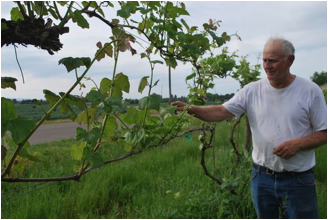


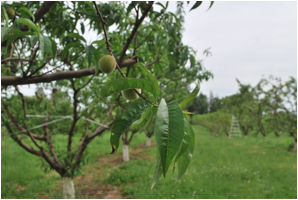

 Nestled between wooded hillside and a bend in the meandering Gales Creek, Anne and Rene’ Berblinger’s
Nestled between wooded hillside and a bend in the meandering Gales Creek, Anne and Rene’ Berblinger’s  Their plant list boasts an astonishing 300 varieties, an accomplished collection for a farm of this scope. And Gales Meadow is all about collections: tomato varieties number in the forties, pepper and garlic varieties in the twenties, many of which are perpetuated using seed collected onsite. This is a boon both for the farm and the home gardeners who purchase vegetable starts from GMF, as the plants are well adapted to the climatic and soil conditions of our region.
Their plant list boasts an astonishing 300 varieties, an accomplished collection for a farm of this scope. And Gales Meadow is all about collections: tomato varieties number in the forties, pepper and garlic varieties in the twenties, many of which are perpetuated using seed collected onsite. This is a boon both for the farm and the home gardeners who purchase vegetable starts from GMF, as the plants are well adapted to the climatic and soil conditions of our region. A healthy handful of the varieties they grow are sourced not from seed catalogs but from fellow farmers and customers who pass on their own favorites. The result is a gallery of unique tomatoes, well-tested in both garden and kitchen, many of which are exclusive to Gales Meadow Farm.
A healthy handful of the varieties they grow are sourced not from seed catalogs but from fellow farmers and customers who pass on their own favorites. The result is a gallery of unique tomatoes, well-tested in both garden and kitchen, many of which are exclusive to Gales Meadow Farm. “Use open-pollinated varieties and save seeds of your favorites,” Anne advises, “especially self-pollinating vegetables like lettuce, tomatoes, peppers, and beans.”
“Use open-pollinated varieties and save seeds of your favorites,” Anne advises, “especially self-pollinating vegetables like lettuce, tomatoes, peppers, and beans.”






 though now surrounded by an ever-encroaching suburbia. The land was never farmed by his family, rather they leased it out in parcels to nearby growers for cutting hay, grazing animals or growing strawberries.
though now surrounded by an ever-encroaching suburbia. The land was never farmed by his family, rather they leased it out in parcels to nearby growers for cutting hay, grazing animals or growing strawberries. From the beginning, Ed had the intention of selling the best apples he could produce. To ensure their quality of flavor and market value, he worked toward organic certification while his trees matured. Within two years Ed was bringing his fruit to markets in the Vancouver, WA area.
From the beginning, Ed had the intention of selling the best apples he could produce. To ensure their quality of flavor and market value, he worked toward organic certification while his trees matured. Within two years Ed was bringing his fruit to markets in the Vancouver, WA area. Elstar, a variety developed in the Netherlands, has soft flesh with an effervescence that hits the tongue then quickly fades into a hint of sweetness. Ed calls these his “champagne apples” because of their unique flavor profile.
Elstar, a variety developed in the Netherlands, has soft flesh with an effervescence that hits the tongue then quickly fades into a hint of sweetness. Ed calls these his “champagne apples” because of their unique flavor profile.


 As true plant collectors, Dave and Annilese have an infectious enthusiasm for the unique and unusual. I found their nursery (like their stall at the market) stocked with a pleasing mix of the familiar and the exotic. Two blooming flats of Sisyrinchium (blue-eyed grass)—one of the top-sellers at the market, according to Annilese—were the anomaly. Most of the plant varieties on display had only a handful of representatives, making for a highly diverse and doted-after assortment.
As true plant collectors, Dave and Annilese have an infectious enthusiasm for the unique and unusual. I found their nursery (like their stall at the market) stocked with a pleasing mix of the familiar and the exotic. Two blooming flats of Sisyrinchium (blue-eyed grass)—one of the top-sellers at the market, according to Annilese—were the anomaly. Most of the plant varieties on display had only a handful of representatives, making for a highly diverse and doted-after assortment. Dave’s work at Terra Nova gives him the opportunity to learn about plants, such as the work of Eugene-based Hellebore breeder Marietta O’Byrne. Her recent series of double-flowered Hellebores add new color and zest to the winter garden, and rank among Dave and Annilese’s personal favorites.
Dave’s work at Terra Nova gives him the opportunity to learn about plants, such as the work of Eugene-based Hellebore breeder Marietta O’Byrne. Her recent series of double-flowered Hellebores add new color and zest to the winter garden, and rank among Dave and Annilese’s personal favorites. Interesting foliage plants permeated the nursery, including Mayapples, Epimediums, a gorgeous black-leaved Bugbane, white-veined niger Hellebores, holly ferns and Hostas, to name a few, all illustrating that a garden without showcase flowers can be as varied and interesting as its blooming counterpart.
Interesting foliage plants permeated the nursery, including Mayapples, Epimediums, a gorgeous black-leaved Bugbane, white-veined niger Hellebores, holly ferns and Hostas, to name a few, all illustrating that a garden without showcase flowers can be as varied and interesting as its blooming counterpart. Just before I left the nursery, Annilese brought out the official mascot, Frondteena, Belgian hare with fine features and coloring as rich as one of the Heucheras on display. It is Frondteena’s profile that they used to create their logo image. Alice followed a white rabbit into Wonderland; Frondteena beckons curious gardeners to Petal Heads’ wonderland of new and unusual plants.
Just before I left the nursery, Annilese brought out the official mascot, Frondteena, Belgian hare with fine features and coloring as rich as one of the Heucheras on display. It is Frondteena’s profile that they used to create their logo image. Alice followed a white rabbit into Wonderland; Frondteena beckons curious gardeners to Petal Heads’ wonderland of new and unusual plants.